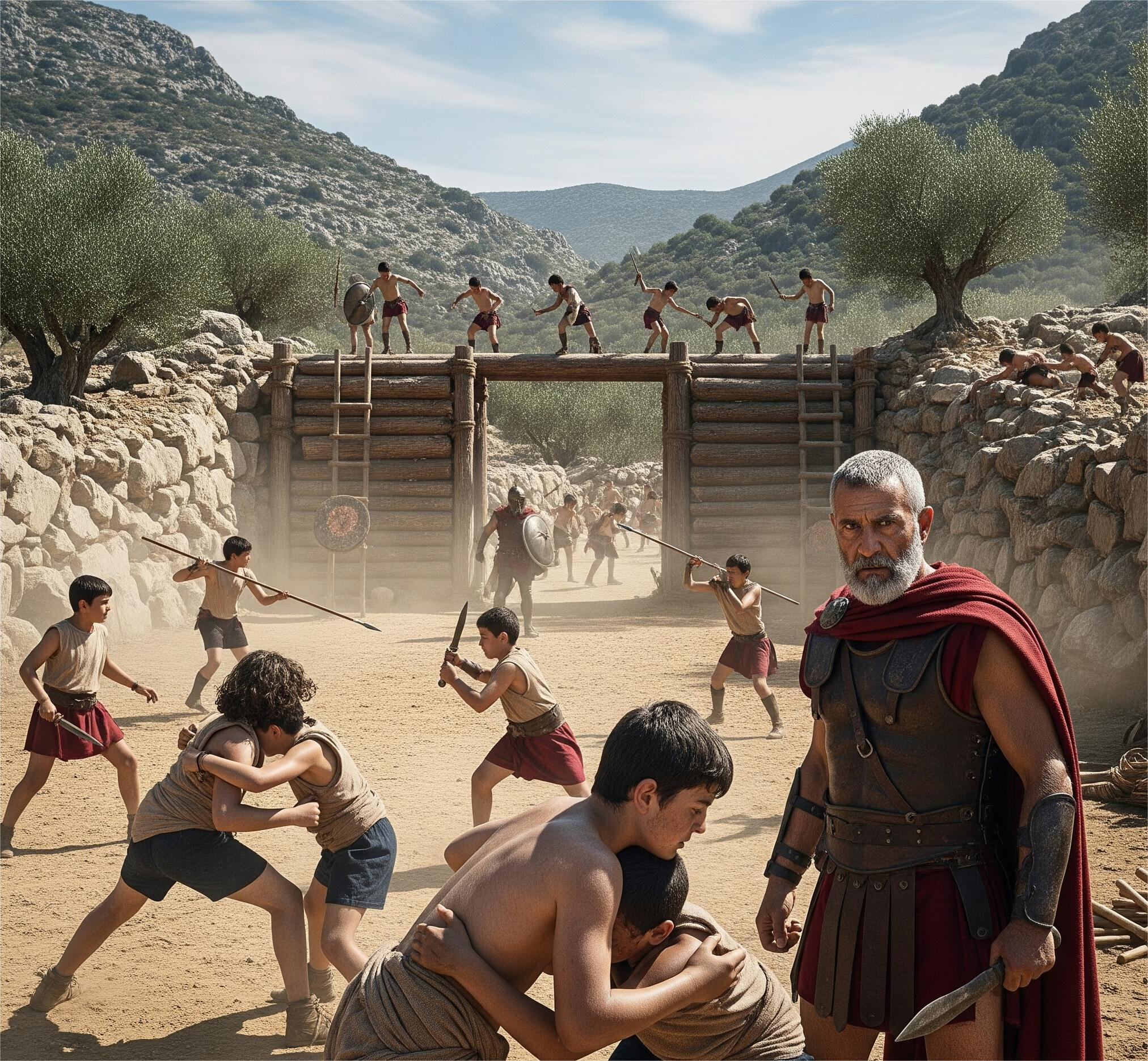Few military systems in the ancient world have captured the imagination quite like that of Sparta. Known for its disciplined warriors, austere society, and unmatched combat prowess, Sparta’s dominance was not an accident—it was the result of a brutally efficient education system known as the Agoge.
This state-sponsored training program shaped Spartan boys into elite warriors, embedding within them a unique blend of obedience, endurance, and loyalty to the state. More than a military academy, the Agoge was a cultural and ideological machine that defined what it meant to be Spartan.
The Birth of a Warrior State
Sparta was a unique city-state in ancient Greece. After the conquest of neighboring Messenia in the 8th century BC, Sparta transformed into a highly militarized society to maintain control over the large population of helots (enslaved people). To secure its dominance, the state developed a system that would train its male citizens to serve, fight, and die for Sparta.
Central to this vision was the Agoge, a training regimen that began in childhood and continued into adulthood. The Agoge was not optional—it was mandatory for all male Spartan citizens, ensuring that every generation would produce hardened, loyal soldiers.
The Agoge in Detail: A Timeline of Spartan Training
Age 7: Taken from the Family
At the age of seven, Spartan boys were removed from their households and placed into communal barracks with their peers. From this point onward, the state became their parent, teacher, and commander. This early separation from the family unit served a clear purpose: to break personal ties and instill unwavering loyalty to the collective.
Life in the barracks was harsh. Boys were given minimal food, clothing, and comfort. They learned to endure pain, hunger, and hardship. Stealing food was not only tolerated but encouraged—so long as they weren’t caught. If they were, it wasn’t the act that was punished, but the failure to be stealthy. This taught cunning, initiative, and resourcefulness.
Ages 10–14: The Formation of Character and Endurance
As they matured, boys underwent constant physical training: running, wrestling, gymnastics, and mock combat. But it wasn’t just about brute strength. The Agoge emphasized self-control, resilience, and obedience. Lessons were often brutal. Beatings were common and seen as a normal part of learning discipline.
Reading and writing were taught, but only enough to fulfill military needs. Intellectual pursuits were secondary to the cultivation of martial excellence.
Ages 15–18: The Krypteia – A Shadowy Rite of Passage
One of the most controversial aspects of Spartan training was the Krypteia, a secret police force composed of the most promising young men. These youths were sent into the countryside with minimal supplies to terrorize or kill rebellious helots.
This practice served dual purposes: it helped suppress the enslaved population and further tested the ruthlessness, cunning, and survival skills of future warriors. The Krypteia embodied Sparta’s belief that war was not only about battlefields but about psychological domination.
Age 20: Full Military Duty
At twenty, young men who completed the Agoge officially joined the Spartan army as full-time soldiers, though they still lived in military barracks. They could now marry, but they continued to eat and sleep with their units.
These men formed the core of Sparta’s hoplite army, known for its tight phalanx formation and iron discipline. Brotherhoods formed in the Agoge translated into battlefield cohesion, making Spartan units virtually unbreakable.
Age 30: Full Citizenship
Only at the age of thirty were Spartan men granted full citizenship (homoioi) and allowed to participate in politics. Even then, military service remained central to their identity until the age of sixty.
The Values the Agoge Instilled
The Agoge was more than just military training. It forged a Spartan identity built on several key values:
Discipline and Obedience: Spartans were taught to follow orders without hesitation.
Endurance and Toughness: From hunger to physical punishment, enduring hardship was a point of pride.
Loyalty to the State: The individual was nothing; Sparta was everything.
Camaraderie and Brotherhood: Bonds formed in training created a unified fighting force.
Modesty and Simplicity: Spartans valued silence, humility, and concise speech (hence the term “laconic”).
Impact on Warfare and Greek History
The Agoge gave Sparta the most feared army in ancient Greece. At battles like Thermopylae and Plataea, Spartan warriors demonstrated unmatched discipline and courage. Their ability to hold formations, maintain morale, and fight to the last man was the envy of other city-states.
The psychological aspect of Spartan warfare was equally important. Their red cloaks, long hair, and emotionless discipline terrified enemies. Spartans didn’t just defeat their opponents—they dominated them mentally before the battle even began.
The Agoge system also influenced how later militaries approached discipline and collective identity. From the Roman legions to modern boot camps, echoes of Spartan training remain.
Criticism and Decline
Despite its effectiveness, the Agoge was not without controversy, even in its time. Philosophers like Plato and Aristotle criticized Sparta for focusing too heavily on warfare, neglecting arts, philosophy, and innovation.
Additionally, the rigid system led to demographic problems. Because full citizens were rare and the Agoge was so demanding, Sparta’s population of warriors dwindled over time. By the Hellenistic period, Sparta was a shadow of its former self, unable to adapt to a changing world.
Legacy of the Agoge
The Agoge left a deep legacy in history, myth, and culture. It turned Sparta into a symbol of military excellence, discipline, and fearlessness. Today, the very word “Spartan” has come to mean austere, tough, and resilient.
Whether admired or condemned, the Agoge remains a fascinating example of how a society can engineer not just soldiers, but a warrior ethos that survives long after the last phalanx has marched.







